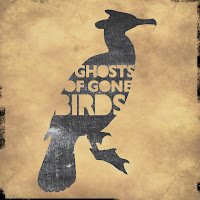'
This is the way the world ends
This is the way the world ends
This is the way the world ends
Not with a bang but a whimper.'
from
The Hollow Men TS Eliot
By one of those curious juxtapositions that help to make life interesting I found myself on the train the other day reading two stories each of which provided an unwitting commentary, of a sort, on the other.
The first was topical: the free newspaper carried a photograph of a newborn child under the headline
'seven billionth baby' and an article about the onward march of the human population. Interestingly the paper chose to picture an infant who looked suspiciously pink and European and probably, therefore, not a good candidate for the actual seven billionth entrant to the human race. Nevertheless the article made alarming and apocalyptic reading; the jaw-dropping rate at which our species is proliferating and the resultant strain upon the planet's natural resources and our tolerance of each other.
The second story was historical: I read about the life and, more poignantly, death of Martha. By the time she died in Cincinnati on 1 September 1914 Martha had become something of a tragic international celebrity. She was certainly one of a kind. You see Martha was a pigeon, a passenger pigeon. Her death in a zoo cage brought to a close the drawn-out inevitability of the extinction of her species. The world had watched powerless to prevent it, realising too late that captive breeding programmes were doomed to failure.
Species become extinct all the time but the loss of the passenger pigeon, like that of the dodo and the great auk, has become emblematic. They are icons of failure; the collateral damage of human excess. The passenger pigeon perches on our shoulder like a conscience, its decline inextricably bound up with the ascendancy of the modern United States. There are enough eye witness accounts to be able to say with reliability that it was once one of the most numerous birds on the planet. Flocks estimated at several billion birds blacked out the skies over mid-western states, taking many hours to pass overhead. But during not much longer than the span of a generation of Americans the passenger pigeon vanished utterly from the Earth.
Like the pigeon we humans are a highly social lot, 'birds of a feather' one might say. Nearly half of our seven billion companions already live in urban areas and the proportion is growing by several percent every decade. To be sure, there are many practical and economic advantages to living in close quarters but there is also a strange psychological illusion going on. We are a profoundly monophobic species, believing against all evidence that we are safer in a crowd. Surely nothing bad can happen when there are so many of us? Or if something bad does happen, surely it won't be me who is picked off?
There is an interesting double survival motive being played out here, the communal and the selfish: the first says 'we are safer if we stick together'; the second says 'I am safer if I stick with you.' Somebody once quipped to me that if you are crossing a field with a friend and encounter a bull, you don't need to be able to run faster than the bull, only faster than your friend! I replied that if my friend and I ran in opposite directions perhaps the bull would be confused enough to allow us both to leave the field unscathed.
 |
Martha in 1914. Silent messenger
that all things must pass |
It is sobering to think that when I was born the world's human population was less than half what it is today. Forward projections are controversial and there are many variables, but the trend is still upwards. 'Where will it all end?' has been our biggest preoccupation ever since
Homo sapiens learned to think for itself. And again the question has both personal and collective dimensions. In his post-apocalyptic novel
On the Beach, Australian novelist Nevil Shute portrays the final days of the last handful of people on Earth. Far from hysterical, they occupy their last moments with mundane, matter-of-fact sorts of things like fixing cars. The book takes its title from a line in TS Eliot's poem
The Hollow Men which itself ends with one of the bleakest, most devastating lines in literature.
There are photographs of Martha in her final days in Cincinnati zoo. She perches quietly alone, mateless. It is almost impossible to look at them without imbuing her with human foreknowledge. After she died her body was preserved and stuffed. Nowadays she is somewhere in the vaults of the Smithsonian Institute, no longer deemed worthy of display. Europe was at war when she died. At the very end the world's attention was turned elsewhere, intent on another carnage. And so with Martha the teeming billions of the passenger pigeon passed out of history, not with a bang but a whimper. We should be careful.
 Whatever his motives, Ralph Steadman has been truly kindled by the Ghosts project. Initially commissioned to contribute a single work, his prints keep coming and he has quipped that extinct birds 'have more character than today's politicians.'
Whatever his motives, Ralph Steadman has been truly kindled by the Ghosts project. Initially commissioned to contribute a single work, his prints keep coming and he has quipped that extinct birds 'have more character than today's politicians.' 